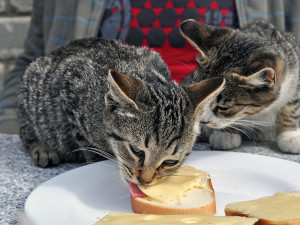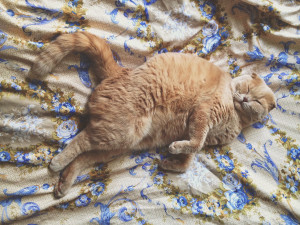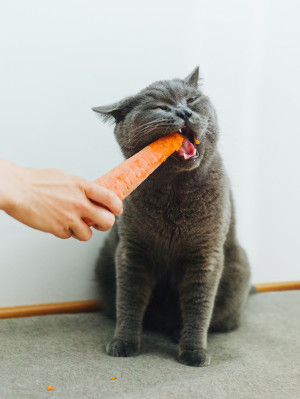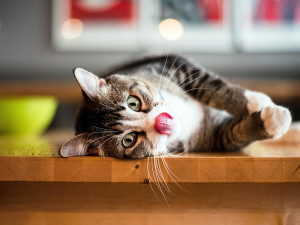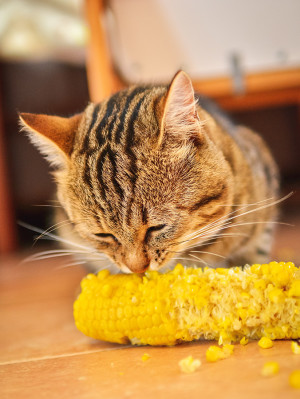Most of us can quite easily conjure an image in our minds of a cat or kitten lapping at a bowl of milk or cream, whether that stems from a childhood cartoon (I personally blame The Aristocats) or some other form of media, but did you know that it’s actually a myth that cats need to drink milk? They are in fact lactose intolerantopens in new tab, they can’t digest dairy and your cat definitely doesn’t need cow’s milk as part of their diet.
The idea that cats can drink milk seems to have entered our collective consciousness as a result of farm cats, who would eagerly lap the sweet cream off the top of a freshly produced bucket of cow milk – but what you don’t see in these scenarios is the aftermath: an upset stomach, diarrhoea and vomiting.
Why do cats love dairy?
Like most mammals, kittens drink their mother's milk when they’re born. At this stage, their intestines produce an enzyme (lactase)opens in new tab that can break down lactose (the sugar found in milk) into single sugars that are easier to digest. Kittens are typically fully weanedopens in new tab off their mother’s milk and on to solid foods by the time they’re eight weeks old, at which point they no longer produce these enzymes and in turn lose the ability to digest lactose. This means the only time a cat may need you to give them milk is if you need to hand-rear a kittenopens in new tab, and then you should only give them specific kitten milk, as other types of milk won’t have the right balance of nutrients.
Yet, for many cats, the appeal of dairy remains, and they continue to crave it because they associate the flavour and scent with positive memoriesopens in new tab – it’s a bit like comfort food for them. The same goes for yoghurt, cheese and ice cream: they’re attracted to the fat and protein in these foods and as soon as they get a whiff of the creamy good stuff in the air, they’re rubbing themselves against your legs, meowing and pawing at you for a taste (so manipulative).
Why would a cat crave something they can’t digest?
The answer lies in the fact that cats aren’t allergic to dairy, they’re intolerant to it. An allergyopens in new tab affects the immune system and even small amounts of the offending food can trigger severe or life-threatening symptoms. In contrast, a food intolerance often affects only the digestive system and causes less serious symptoms. So even though cats may vomit or get diarrhoeaopens in new tab after eating dairy, the effects are not severe enough for it to overpower their cravings – if you’ve ever had a dodgy tummy after eating a curry but somehow miraculously forgotten that traumatic bathroom experience the next time takeaway night rolls round, you’ll be able to empathise with this selective memory when it comes to tasty meals.
Can cats have dairy as a treat?
Cats do not need the extra protein and fat in dairy if they have a well-balanced diet – in fact, The PDSA statesopens in new tab that “a saucer of milk for your cat is like you eating an entire 12 inch pizza” on top of your complete calories for the day (we’ve all likely done exactly that, but it’s not great for us!) However, if you want to give your cat a tiny lick of cream cheese from your fingertip or a nibble of cheese once in a blue moon, this will probably be fine. But if you notice that they experience vomiting, diarrhoea or have loose poos afterwards, it’s best to avoid it in future. If they have a more severe reaction, consult your vet.
What about the cat milk I see in supermarkets?
There are cat milks on the market that are specially formulated with low or zero levels of lactose, which can be given to your cat as a treat. Take note of the servings: most bottles contain four servings and the maximum you should give your cat per week is one bottle in total – make sure to reduce their daily calories in other areas to compensate accordingly, too.
The bottom line: can cats eat human food?
When it comes to sharing your food with your cat, it’s always important to double-check that what you are offering is safe for your feline friend. There are some foods that are OK in moderation, but there are also some foods we eat all the time that are surprisingly toxic to cats.
If in doubt, consult your vet before offering your cat something new. Always make sure that what you offer is free of spices and oils that could be problematic for your cat, even if the main ingredient is safe.
Be sure to avoid foods that may be a choking hazard or cause injuries to your cat’s digestive tract, such as foods with bones, shells, toothpicks or skewers. And finally, remember that cats have very unique nutritional requirements so they must get the bulk of their diet from a balanced cat food diet. The occasional scrap of human food may be a delicious treat, as long as it is less than 10 percent of your cat’s total diet. Most important of all, be sure to provide your kitty with appropriate, nutritionally balanced cat food.
Foods that are good for cats
If you are looking for healthy snack options to share with your cat, consider some of these:
Watermelon can be a refreshing treat to share with your kitty.
Cat safe peanut butter is high in protein and good fats.
Apples are a great source of fibre and many important vitamins (although the seeds can be toxic ingested in large quantities).
Foods that are dangerous to cats
Garlic is toxic to cats and can cause life-threatening anaemia.
Onions are toxic to cats and can cause fatal health complications.
Chocolate is toxic to cats and can cause a range of health problems depending on how much is ingested.
Note: while caution was taken to give safe recommendations and accurate instructions in this article, it is impossible to predict an individual cat’s reaction to any food or ingredient. Readers should consult their vets and use personal judgement when applying this information to their own cats’ diets.



